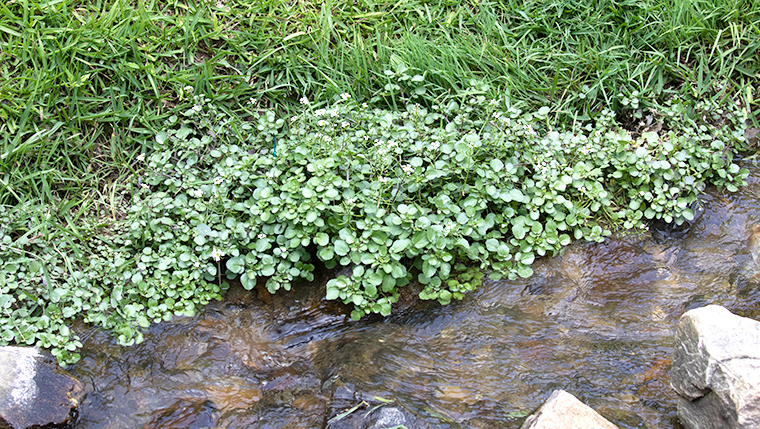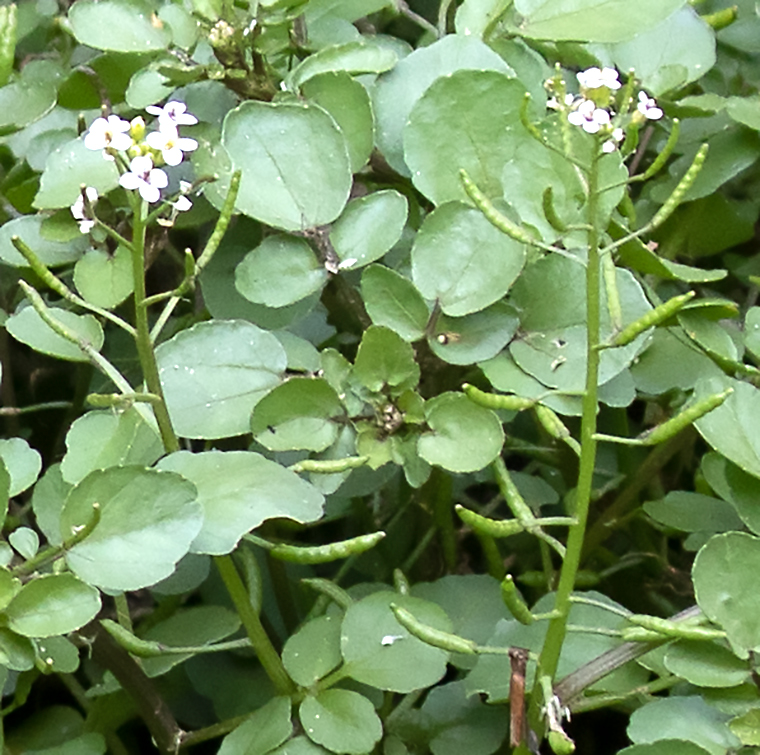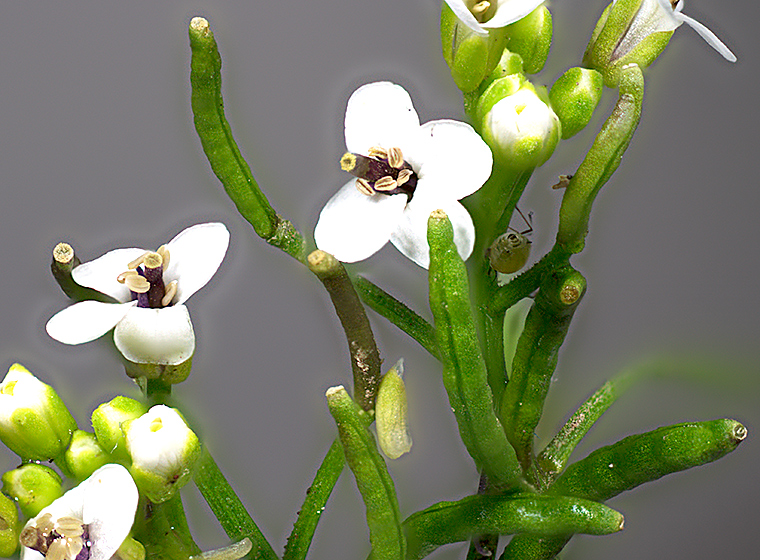
Henderson Falls Park in Toccoa, Georgia is a favorite stop of ours. In the shallow water along the edges of the small stream that flows through the park, this interesting plant is growing. It is Watercress (Nasturtium officiale), a member of the Cabbage family (Brassicaceae). It is not native to the U.S., but has been widely introduced because of its edibility. Both the stems and leaves can be eaten raw as an addition to salad or cooked. Raw they add a slightly peppery or tangy taste to salad. Watercress is native to Europe and Asia where it has been consumed since ancient times. Lots of interesting information about this plant is available from an Internet search of “watercress”. There is a web site devoted to it (watercress.com) where lots of interesting historical and nutritional information can be found.
Watercress can sometimes be found in grocery stores or it can be collected from streams. However, one must be cautious when eating raw Watercress collected from the wild, because of the deplorable state of many of our watercourses, which can contain various undesirable pollutants or pathogens.

Here are a couple of flowering stems. As the stem grows, it first produces small white flowers. As the flowers are fertilized they begin to produce the elongate seed pods which are sort of “left behind” as the stem continues to elongate and produce new flowers at its tip.

The flowers are small (less than one inch across) and contain four petals arranged in a cross pattern typical of the family Brassicaceae (which is also sometimes called Cruciferae because of the flower shape). This photograph shows the petals, the six stamens, and the cylindrical pistil which will elongate to form a seed pod, several of which can also be seen here.
